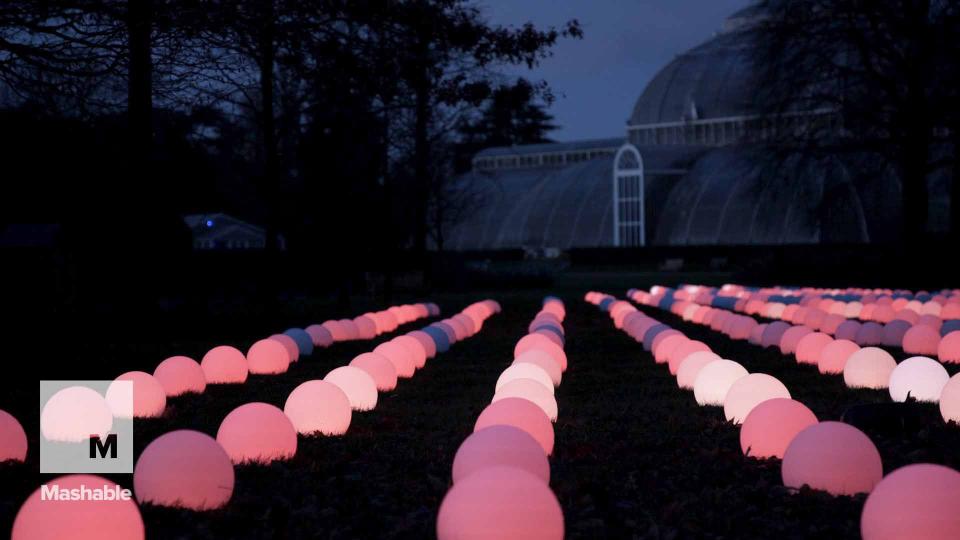5 Danish holiday traditions to make Christmas last a whole month

When my mother recently came over from Denmark to visit me in London, she had with her 24 numbered, individually wrapped presents.
They’re just small things and trinkets, I can tell from squeezing the parcels. And I know, because she’s given me a set of 24 presents like these every year for many years. She took over the task from the nisse, a goblin-like creature from Danish folklore. Until I reached my teenage years and lost my ability to suspend disbelief, it was the nisse who laid out a present for me each morning in December (so nice of my mother to relieve the poor creature of his duty.) These little gifts are called kalendergaver, or calendar presents.
SEE ALSO: 15 holiday songs that are super weird but we somehow still love
This little tradition is just one of many lovely Danish Christmas traditions that really light up the month of December in our dark corner of the world.
You see, come December we in the Scandinavian region are two months into a spell of vast darkness that lasts well into February (come winter solstice, the sun is only up for 7 hours). Christmas represents a shining beacon of light in a dark, dark time, and that’s why we make the most of it. Instead of just celebrating the holidays around the end of December, we spread out the celebrations over the entire month to really soak up enough positive energy to get through the dark months.
Here’s how you can make your Christmas last a whole month, courtesy of the Danes.
1. Make everything a countdown
Calendar presents are just one way we keep ourselves busy while waiting for the 24th December to arrive. For us, this day is what it all boils down to, since nothing really happens on the 25th. The major TV channels show 24-part Christmas calendar series for kids, and even gamblers can have it their way with special Christmas-themed scratch cards with one square to scratch for each day.
2. On Sundays, we drink gløgg
In Denmark, every Sunday in December represents an opportunity to indulge with gløgg (mulled red wine with raisins, almonds and spices), æbleskiver (balls of buttermilk pancake batter fried in a special pan with indentations, served with jam and powdered sugar), and listening to the same old Christmas playlist over and over. They are Advent Sundays, the last four Sundays leading up to Christmas. Technically, you’re supposed to go to church and wait longingly for Jesus’s birthday to roll around, but most people spend the days drinking and eating with friends and family and lighting our Advent wreaths.
3. Observe every possible holiday even if you’re not remotely religious
Despite not being a particularly religious country (80 percent of Danes say that religion is “not important”) Danes love to observe traditions rooted in Christianity. On December 13th, we throw in one such celebration just to mark being halfway to Christmas — Lucia Day, or St. Lucy’s day in English.
Despite Lucia being a Sicilian saint, the celebration of Lucia day is actually a Nordic tradition. We celebrate Lucia bringing light in dark times. In schools, there will be Lucia parades, where all lights are turned off and children, dressed in white, walk in a line carrying candles and singing the Lucia psalm. One lucky child gets to be the Lucia bride, wearing a crown with lit candles (yes, this tradition is both flammable and weirdly patriarchal, but quite nice). All of this symbolises that we are moving towards lighter times and we wash it down with Swedish saffron rolls (lussekatter). Trust that there will always be carbs at Danish Christmas celebrations.

Image: Getty Images
4. Get drunk with your friends, co-workers, everybody
Office holiday parties are commonplace all over, but in Denmark you also have to have a traditional Julefrokost, Christmas lunch, with friends. The recipe: lots of traditional food (think pork) and lots of snaps, or akvavit (a very strong alcoholic beverage). That’s pretty much it. Sometimes we include a Christmas present raffle game, but the booze and food is the most important part of any Julefrokost.

Image: Getty Images/Hero Images
5. When Christmas Eve arrives, give it your all
What all of this leads up to, the climax of this most festive month, is the 24th, Danish Christmas Eve. For most people, the evening starts officially at 4 p.m. with a Disney Christmas special that’s been broadcast every year for 50 years. How Disney got to claim our time on this precious Christmas afternoon, I’d like to know. We drink Port and eat homemade marzipan confectionary and Christmas cookies.
Dinner consists of roast pork with crackling, potatoes, caramelised potatoes, warm red cabbage and crisps. The pudding, Risalamande, a sweet rice porridge with whipped cream, vanilla, and loads of finely chopped almonds is both a delicious dessert and a fun dinner game.
Here's the twist: one whole almond has been thrown in the bowl, and the person who gets it is the winner of the mandelgave, literally meaning "almond present". If you’re a fun uncle-type you’ll find the almond and hide it in your napkin to cause confusion – you’ll receive a few strained laughs at best.

Image: Getty Images/EyeEm
To top all of this off, we hold hands as we walk around the Christmas tree. Not exactly rocking around the Christmas tree, but rather psalming. We sing Christmas songs and psalms and eye the presents underneath, which will be opened later that evening.
May these Scandi Christmas traditions brighten your December. They are the ultimate way to have a very glædelig jul (Merry Christmas).
WATCH: At Christmas, these UNESCO protected botanical gardens turn into a living fairytale


